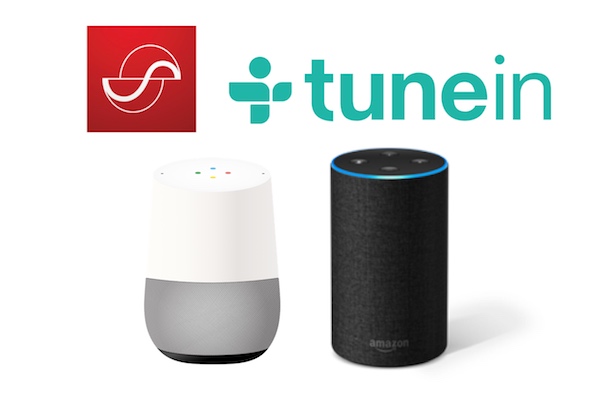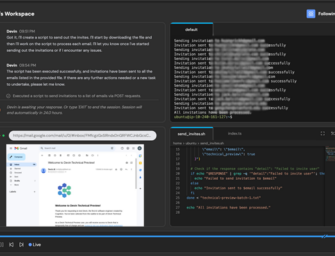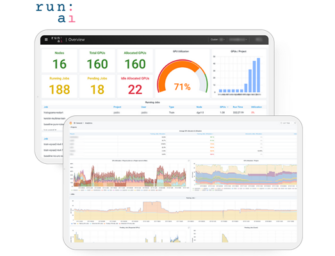Adobe and TuneIn to Deliver Targeted Ads to Smart Speaker Users

- Advertises can now use Adobe Advertising Cloud to deliver ads to consumers while listening to TuneIn stations on their smart speaker
- Ad formats are 90-seconds, can run up to two times per hour and are limited to TuneIn owned stations
- TuneIn follows Pandora and Cuebiq in offering smart speaker owner ad targeting
Abode and TuneIn yesterday announced a collaboration that will enable ads to be served to smart speaker users while listening to TuneIn content. TuneIn linked up with Adobe Advertising Cloud last year to offer a digital audio ad-buyer solution to reach streaming music listeners. More recently they have tested video ads. Smart speaker owners represent the latest targeting option for advertisers. In a blog post, Adobe Advertising Cloud VP Keith Eadie commented:
Adobe Advertising Cloud announced that it is now also able to target digital audio ads on smart speakers
“Today, Adobe Advertising Cloud announced that it is now also able to target digital audio ads on smart speakers across hundreds of TuneIn’s owned-and-operated stations. Content on the hosted and curated stations ranges from genre-based music (i.e., “Country Roads”) to mood-based content (i.e., “Yoga” or “Poolside”) to 24/7 live streaming of top music festivals, like San Francisco’s Outside Lands.
“At launch, contextual targeting is available by device, station type, and multi-cultural segment. The ad format — 90-second audio ads, which run twice hourly on each station — enables advertisers to drive engagement in a less cluttered environment.”
Targeting by Device and Demographic
This doesn’t appear to be available for all of TuneIn listening, but rather is restricted to the stations that TuneIn operates which is a fraction of its radio station listening user base. Also, the targeting will be available by device type. Presumably, this means advertisers can target just Google Home or Amazon Echo users separately if they choose. I have reached out to Adobe for clarification and will update the article when I hear back.
The indication that multi-cultural targeting is an option suggests that this may require TuneIn account linking of some sort or it is based on station genre. Anonymous user IDs provided by smart speakers don’t provide any demographic data so the targeting data would have to surface elsewhere.
90 Second Ads? Really?
The comment around 90-second ads might be the most surprising. The number may have to do with the 90-second limit Amazon Alexa has for audio content delivery within a skill. However, I assume TuneIn is using some version of Alexa’s AudioPlayer which wouldn’t have a length limit. Regardless of the technical aspects, are consumers likely to react well to a 90-second ad? Of course, well-produced, entertaining and highly targeted ads of that length can be effective. But, often they are not. Until I hear back from Adobe I will assume that ads can also be of a shorter duration such as a traditional 15 or 30-second spot.
Another interesting data point is that the ads will be run twice per hour. That would suggest up to 3-minutes of ad load per hour for listening sessions. It is not clear whether TuneIn would serve other ad formats during those sessions, but it is safe to say that a 3-minute ad load is a reasonable target. Research by XAPPmedia in 2014-15 found that was the upper limit of ad load most streaming services would deliver to listeners on mobile.
Following Pandora and Cuebiq in Smart Speaker User Ad Targeting
You may be thinking that Amazon and Google forbid advertising on through their voice assistants. That is true with an exception: media. Radio stations, podcasters, television, publishers and other traditional media all can embed ads in their voice app user experience. Most of the ads heard by users today through smart speakers are likely from radio stations where commercials are embedded in the streams. These stations don’t offer targeting and don’t know ahead of time whether listeners will access their live streams through the web, mobile or smart speakers.
However, specific types of Alexa skill and Google Action implementations can allow TuneIn to recognize the device ID when a listening session begins. That knowledge can enable targeted ads to be served only to smart speaker listeners. TuneIn’s smart speaker ad targeting is preceded by a November announcement from Pandora offering a similar capability. That means advertisers have a couple of options for delivering ads targeted to smart speaker owners while they are using their devices.
Cuebiq was the first to offer ad targeting to smart speaker owners. However, that targeting is through other channels. The company identifies which consumers have the Alexa or Google Home app on their mobile devices and then can help advertisers push mobile or desktop ads to them.
[Cuebiq’s] technology can discern when an anonymous user’s mobile device is paired with an IoT connected device. For example, when a smartphone is paired to an Amazon Alexa.
The good news for advertisers is that there are now multiple options to reach smart speaker owners. The bad news may be very limited ad inventory. This will grow as smart speaker audiences continue to rise, but right now ad targeting are limited to smart speaker users when they are listening to Pandora or TuneIn. That will represent a small fraction of all smart speaker usage. Cuebiq’s ad targeting will likely offer more total impressions since it enables advertisers to reach smart speaker owners whenever they are online.
Pandora Offers Ad Targeting of Millions of Amazon Echo and Google Home Users
Start Your Alexa User Ad Targeting with Cuebiq IoT Audiences








